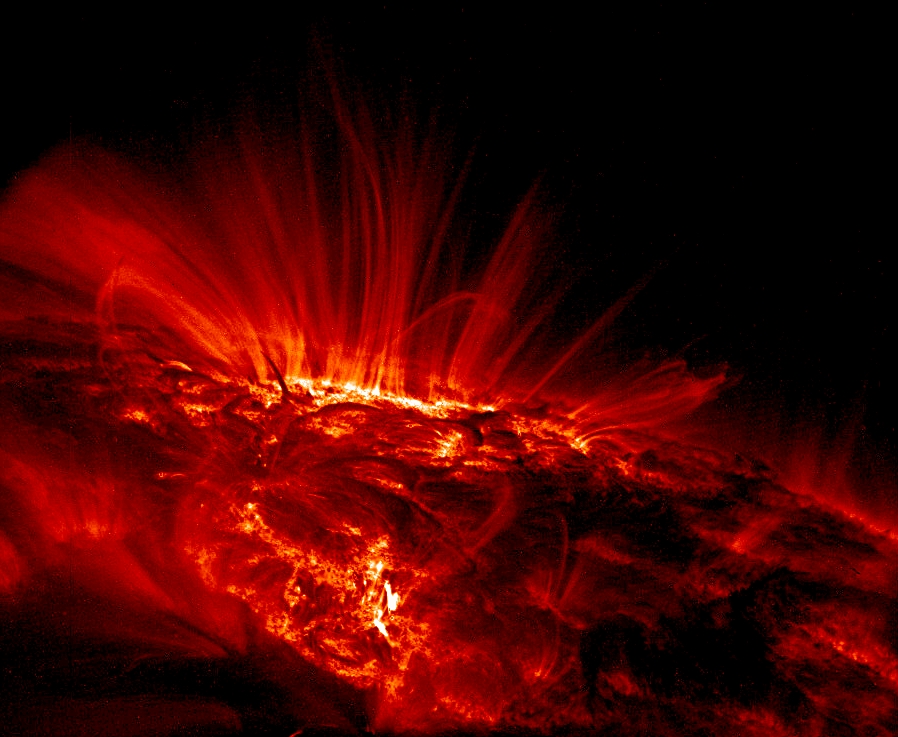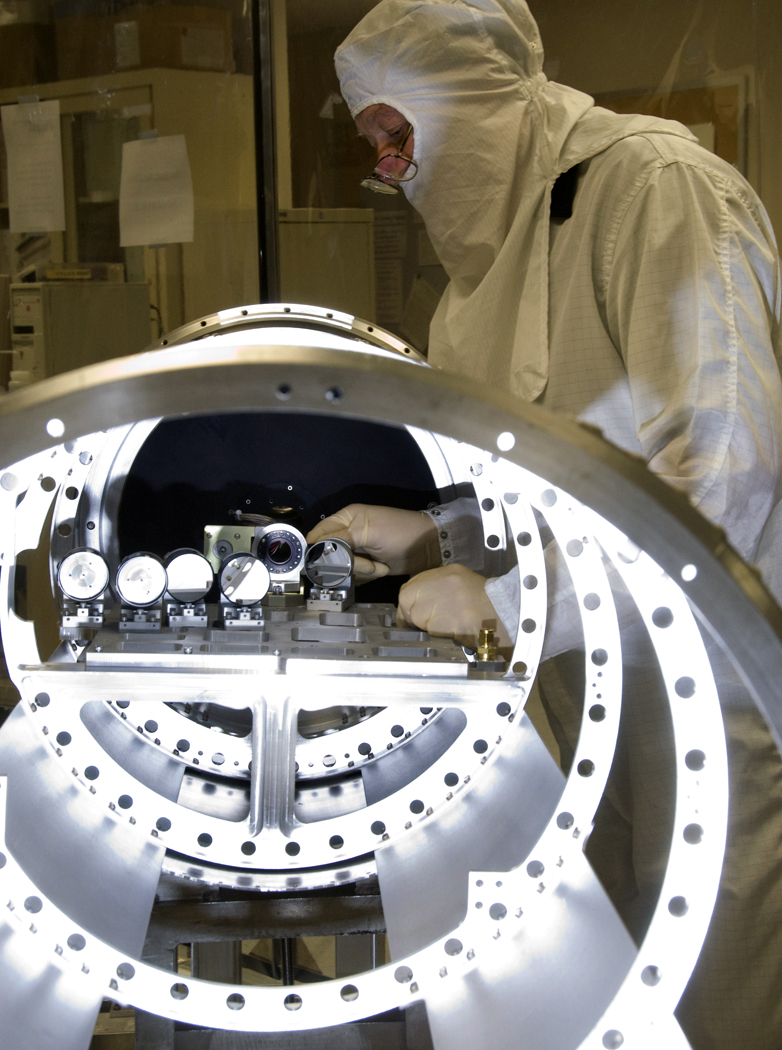13 August 2010
Prototype instrument predicts solar flares
Posted by koneil

The surface of the sun in ultraviolet light. Even the relatively cool, dark regions have temperatures of thousands of degrees. (NASA/TRACE)
A blast of energy and particles erupted from the Sun on Saturday, marking the end of an approximately three-year period of very low solar activity. While people across the northern and southern hemispheres watched for the charged particles to hit Earth’s atmosphere and create auroras, Jonathan Cirtain was celebrating the event for another reason.
Cirtain, an astrophysicist based at NASA’s Marshall Space Flight Center in Huntsville, Alabama, began building an instrument five years ago. He set out to measure changes in the Sun’s atmosphere that cause sunspots, solar flares and coronal mass ejections (CMEs). Solar flares are short, focused releases of energy and hot ionized gas from the sun’s surface. CMEs are solar flares’ longer-lasting cousins.
Cirtain and his collaborators had to wait for two years for a solar event large enough to make it worth risking their prototype. Last week, they finally got their chance. A satellite-based telescope detected a very large sunspot forming which they thought would develop a CME within a few days — just the event they were waiting for.
A rocket launched the Solar Ultraviolet Magnetograph Investigation (SUMI) from the White Sands Missile Range in New Mexico, and 94 seconds later, it was above most of the Earth’s atmosphere. The 3-meter (10-foot) long telescope then had little more than seven minutes to measure the magnetic activity near the sunspot for before falling back to the ground. Cirtain said the mission, which he counts as a complete success, will help him and his colleagues build an instrument that will provide much earlier predictions of solar flare and CME activity than we currently have.
“With SUMI and other instruments like it, we could probably increase that [warning time] to an hour,” Cirtain said. “I believe that by the end of the decade, we’ll have multiple hours of warning.” The added warning time is necessary to protect astronauts, satellites, and sensitive instruments that work in space from damaging levels of radiation released by solar flares and CMEs in the form of gamma rays, x-rays, and high-energy electrons and protons.
SUMI has the potential to improve forecasts because it detects changes in the Sun’s magnetic fields. Solar flares and CMEs occur when some of the Sun’s magnetic fields become so distorted and strained that they can no longer stay in their current orientation, and shift back into alignment with an explosive release of energy.
The magnetic fields become distorted when they are pushed around by gases in the Sun’s lower atmosphere (approximately 1000 kilometers, or 621 miles above the Sun’s surface). However, in the Sun’s upper atmosphere (above 2,500 kilometers or 1553 miles), where there is less gas, the magnetic fields can better resist being pushed. As a result, magnetic fields with the same polarity may get forced together on either side of the boundary between the two atmospheric layers, building up energy similar to the force you feel if you push two magnets’ matching poles together.
The SUMI telescope uses special optics to detect the polarization of the light coming from the Sun in order to measure its magnetic fields. As the light emitted by the Sun’s heated gases passes through the Sun’s magnetic fields, the wavelengths change. Measuring the polarization of the light allows the researchers to see which wavelengths are changed, and by how much.
Eventually, the warped magnetic fields slip back into a more stable position, and as they do, radiation of all wavelengths and charged particles rush outward from the Sun’s surface – sometimes towards Earth.
“The amount of magnetic field involved dictates the scale of the event,” Cirtain said. The released energy accelerates the material up from the Sun’s lower atmosphere, creating a solar flare or CME with as much energy as a billion thermonuclear devices. “The scale is enormous,” he said. Even one of the smaller flares from the region Cirtain observed was as powerful as exploding a few megatons of TNT.
The changes in light cannot be detected through the Earth’s atmosphere, however, so Cirtain hopes an improved version of SUMI will eventually be installed on a satellite. He says he will apply for additional NASA funding to improve the design of the SUMI instrument in time to catch the end of the Sun’s current active period in about 2013.
— Kathleen O’Neil, AGU science writer











 GeoSpace is a blog on Earth and space science, managed by AGU’s Public Information staff. The blog features posts by AGU writers and guest contributors on all sorts of relevant science topics, but with a focus on new research and geo and space sciences-related stories that are currently in the news.
GeoSpace is a blog on Earth and space science, managed by AGU’s Public Information staff. The blog features posts by AGU writers and guest contributors on all sorts of relevant science topics, but with a focus on new research and geo and space sciences-related stories that are currently in the news.
[…] down in previous cycles as it does now. But the activity (measurable through new techniques such as using the polarisation of light to detect the magnetic field structure), and the resulting auroral signals, provided some talking points for […]